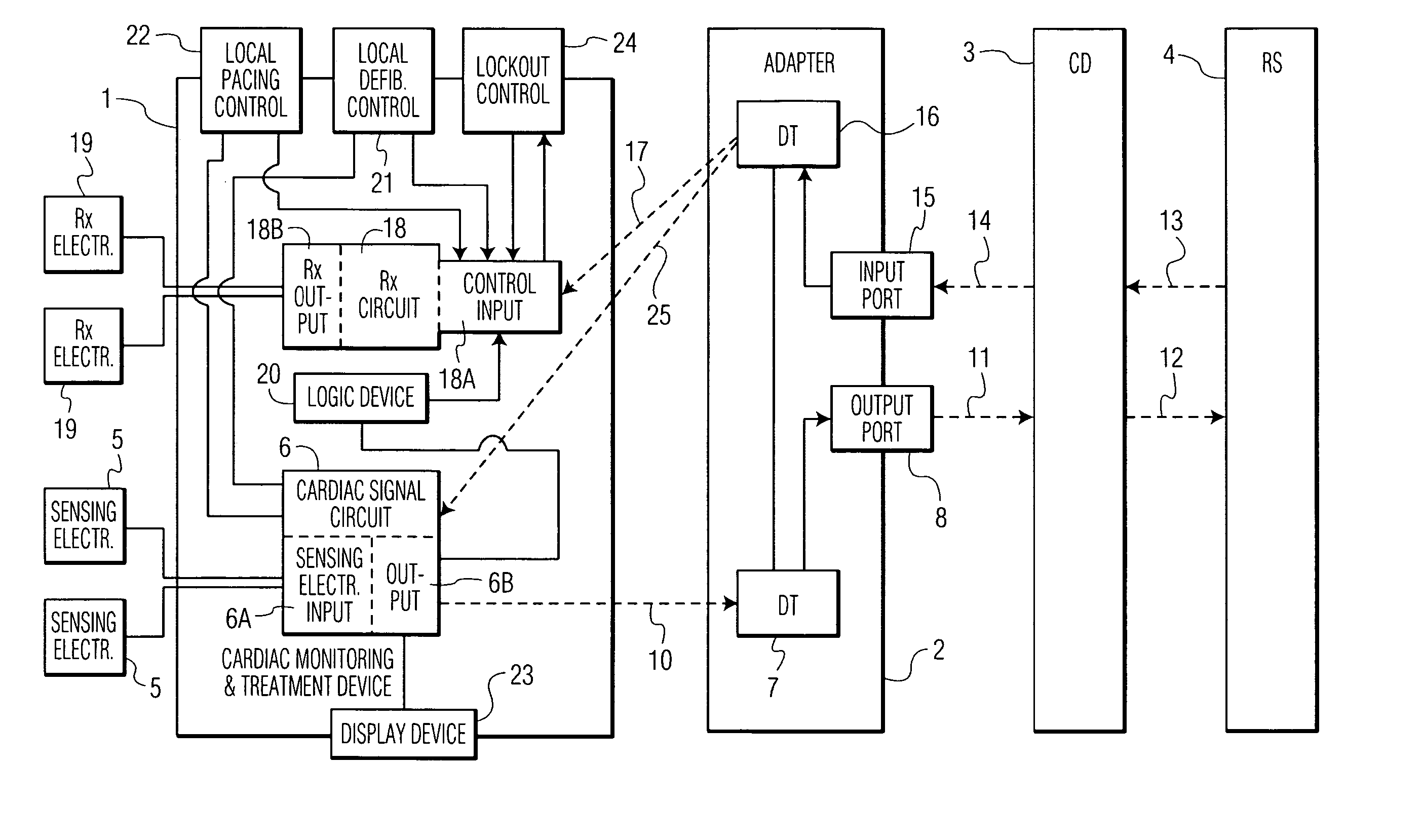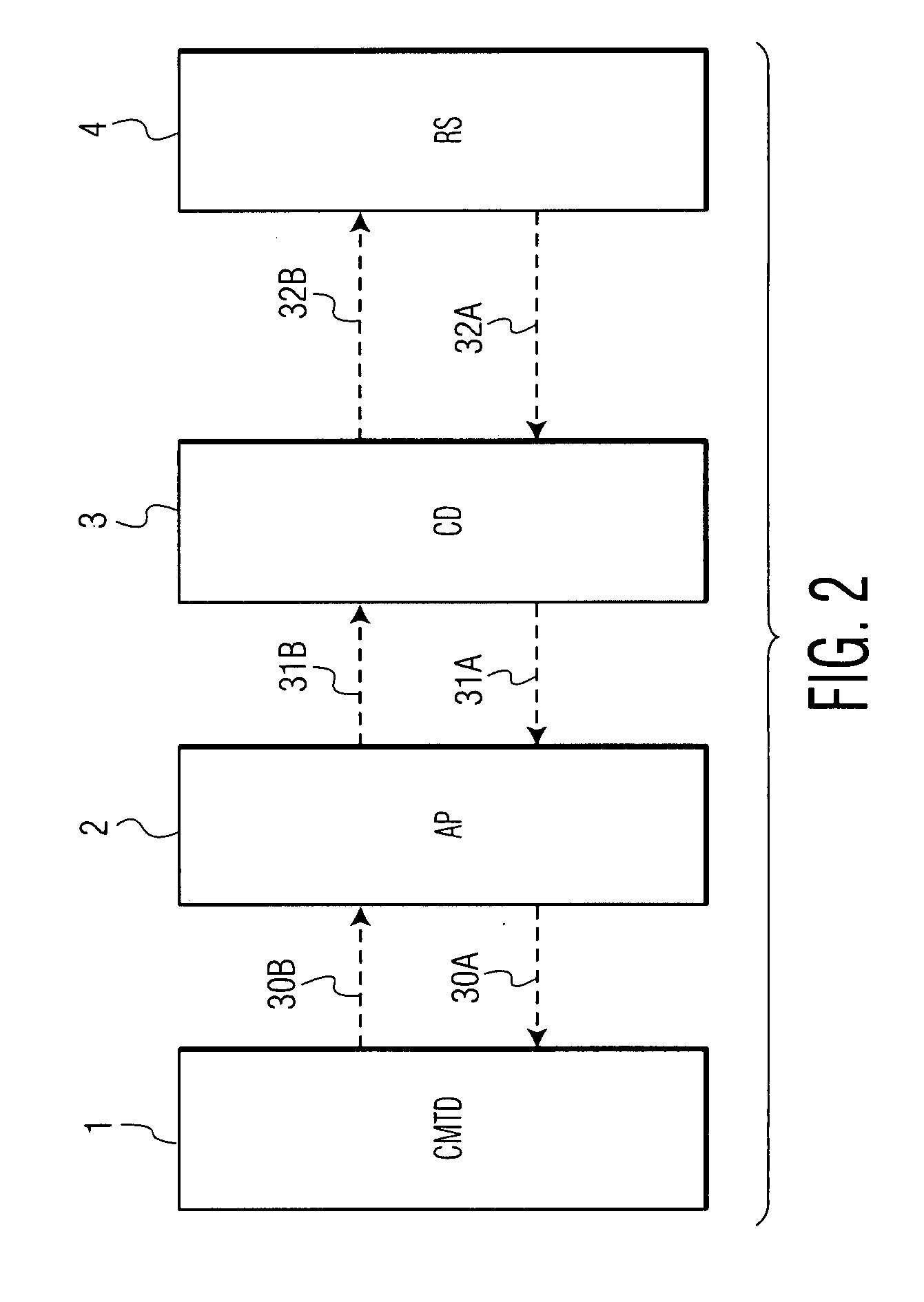Control of a defibrillator and/or pacemaker
a technology of defibrillator and pacemaker, which is applied in the field of control of defibrillator and/or pacemaker, can solve the problems of high rate of sudden death due to cardiac arrest, and the need for defibrillator shock to be administered within a very short tim
- Summary
- Abstract
- Description
- Claims
- Application Information
AI Technical Summary
Problems solved by technology
Method used
Image
Examples
Embodiment Construction
[0075] In the disclosure hereinabove and hereinbelow: [0076]“Defibrillation” and “defibrillator” are the nouns used to refer to the act of and the device which terminates a rapid heart rhythm with a non-synchronized shock. These two terms are, herein, intended to also refer to “cardioversion” and “cardioverter”, respectively, these latter two terms implying a synchronized shock.
[0077] The detailed description may be broadly divided into: [0078] 1) Overview of device function (FIGS. 1-5) [0079] 2) Example: System with unified adapter and communication device (FIGS. 6-9) [0080] 3) Example: Detailed Description of a modified external defibrillator system which may have various embodiments (FIG. 10) [0081] 4) Example: System with unified adapter and cardiac monitoring and treatment device (FIGS. 11-13) [0082] 5) Example: Versions of the system with at least one implantable component (FIGS. 14A, 14B and 14C).
Overview of Device Function
[0083]FIG. 1 shows an overview of a generalized v...
PUM
 Login to View More
Login to View More Abstract
Description
Claims
Application Information
 Login to View More
Login to View More - R&D
- Intellectual Property
- Life Sciences
- Materials
- Tech Scout
- Unparalleled Data Quality
- Higher Quality Content
- 60% Fewer Hallucinations
Browse by: Latest US Patents, China's latest patents, Technical Efficacy Thesaurus, Application Domain, Technology Topic, Popular Technical Reports.
© 2025 PatSnap. All rights reserved.Legal|Privacy policy|Modern Slavery Act Transparency Statement|Sitemap|About US| Contact US: help@patsnap.com



